17 Tips From Chefs On Arranging An Efficient Galley Kitchen
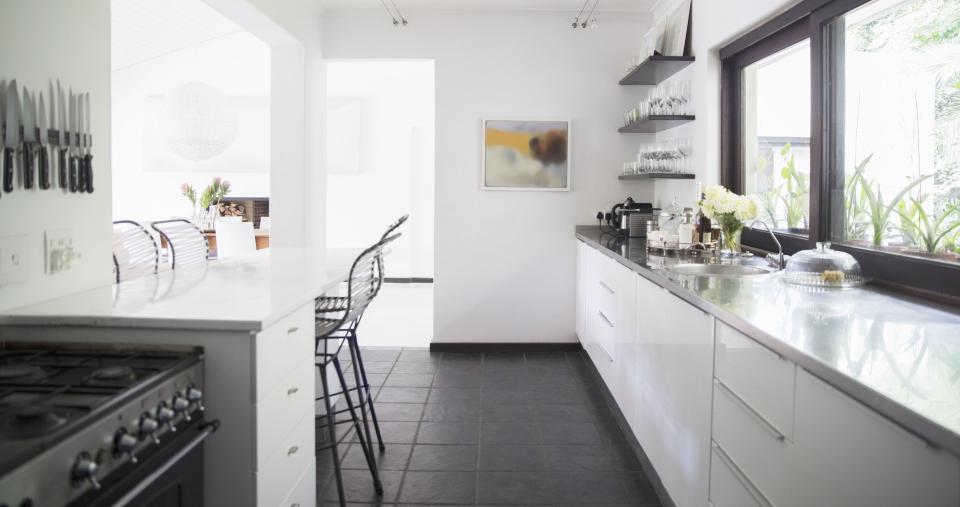
17 Tips From Chefs On Arranging An Efficient Galley Kitchen
For these top notch experts, creating an efficient kitchen is part of the job.
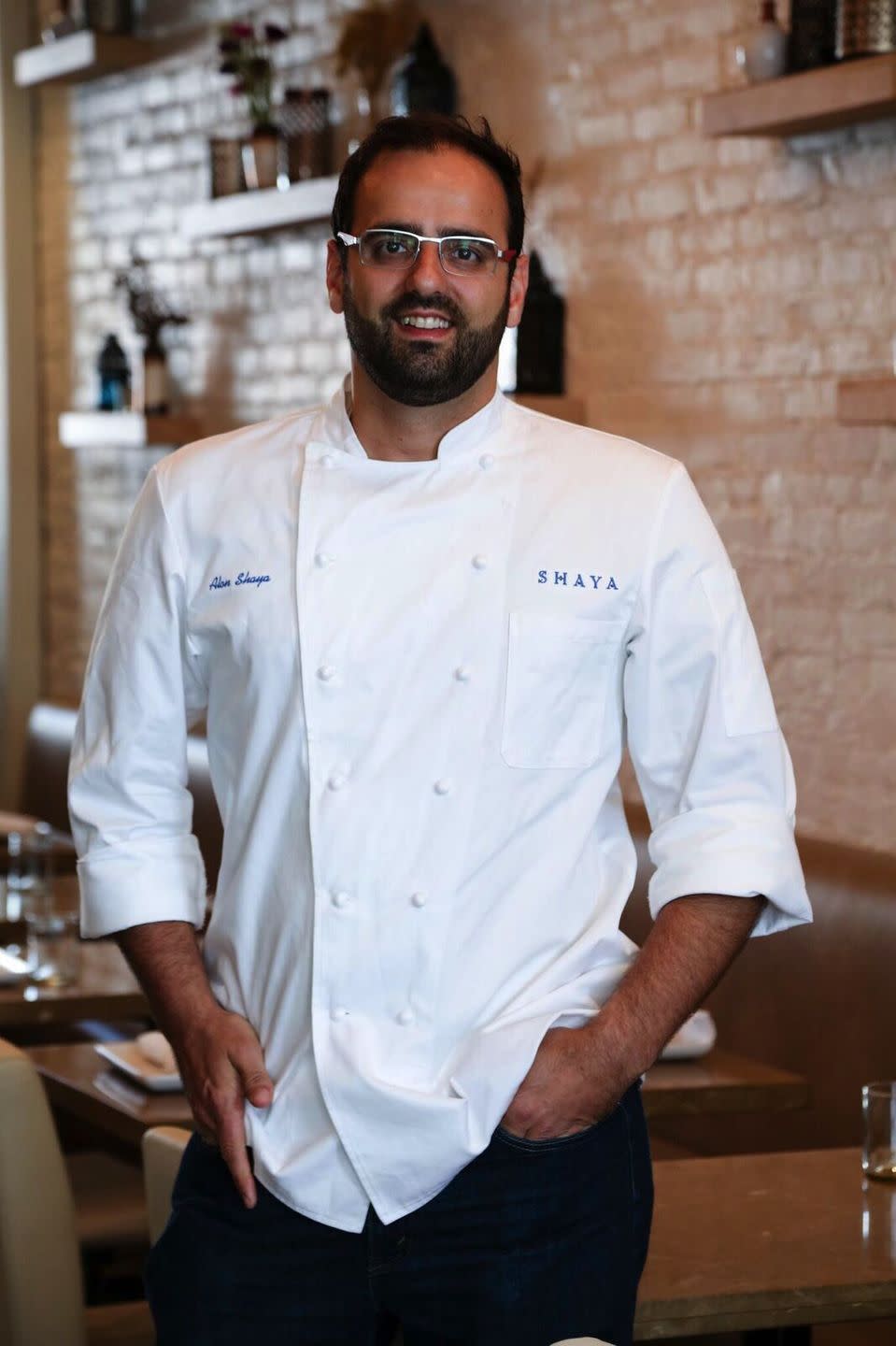
Chef Alon Shaya
"The kitchen in Shaya is probably the size of an Amtrak car," says Alon Shaya, executive chef and partner at Shaya restaurant in New Orleans. "Everything is in one straight line, and there's barely enough room for two people to walk through at the same time." Read on to learn how his team makes the most of the small space.
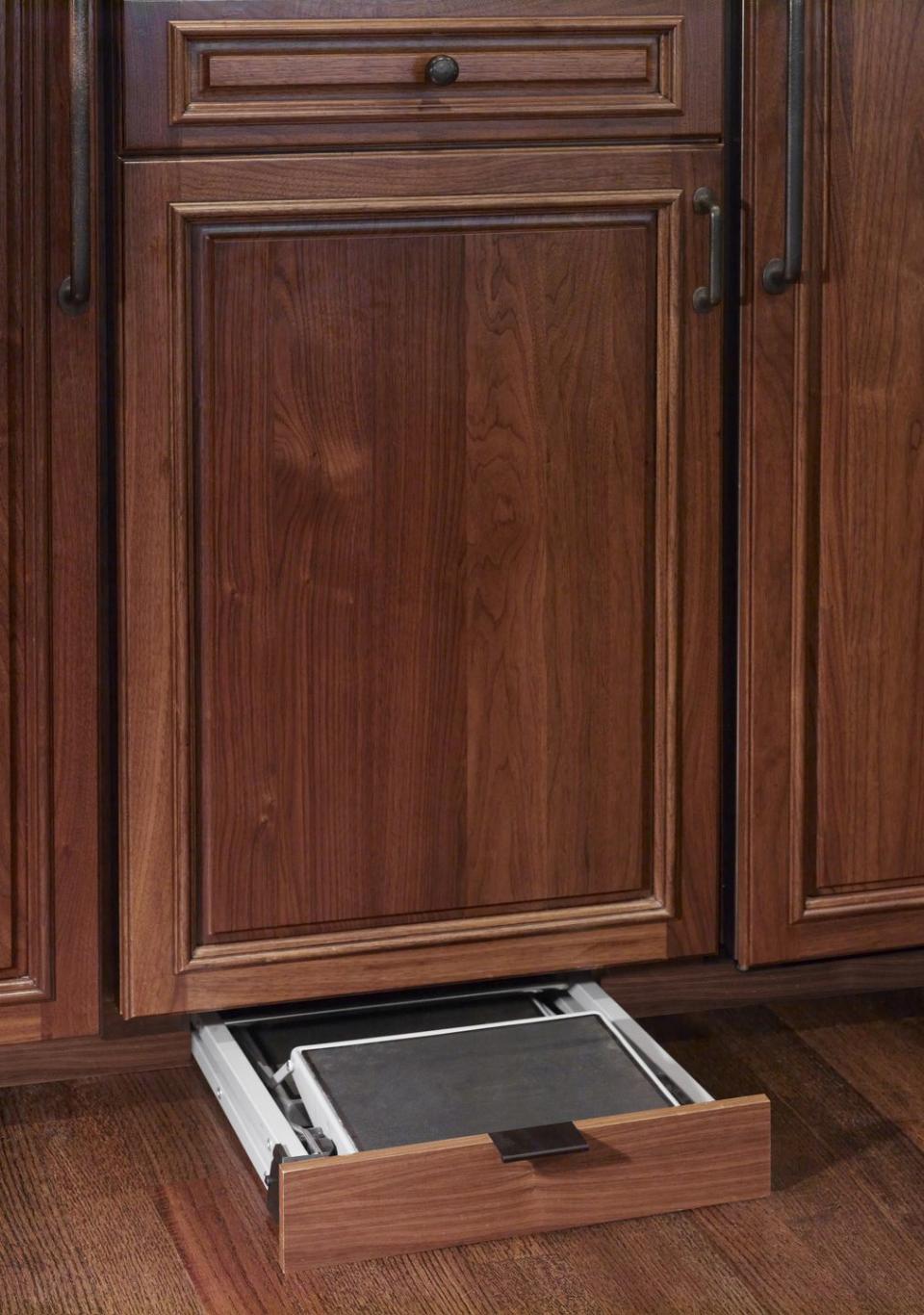
First, Get A Step Stool
In a small kitchen, it's crucial to make use of spaces you can't reach. "We organize with shelving that reaches up nice and high, and use a step stool that's easy to store or doesn't take up much space," says Shaya. "Opt for one that can fit underneath the counter laying down, or if you have a little closet, keep it in there."
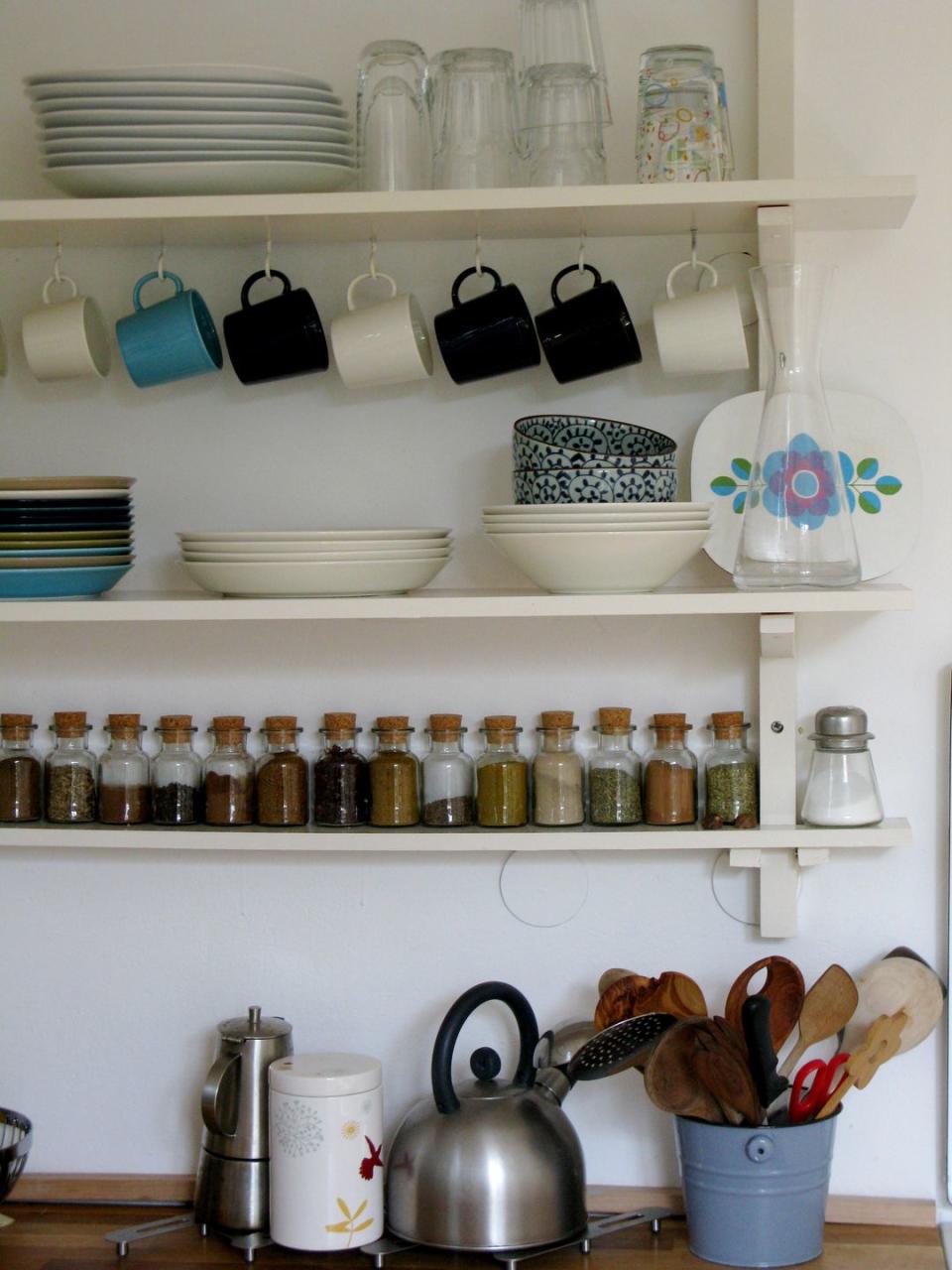
Opt For Open Shelving
It makes it simpler to spot what you have and where it is, and visually expands the space. "I like open shelving because it makes a tight space look a little bigger," says Shaya. "If you close up all the cabinets, they tend to make the space feel small."
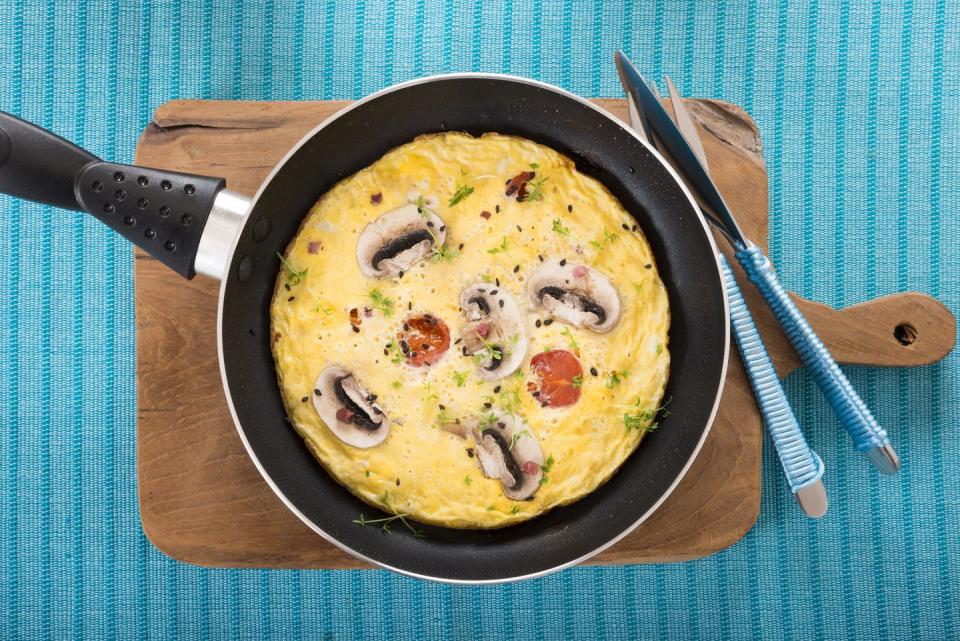
Organize Based On What You Cook
Arrange your kitchen based on what you cook. If eggs are your breakfast each morning, make sure the sauté pans are stored close to the stove, and that your extra virgin olive oil and salt are nearby as well. "Cooking can be very frustrating when you find yourself running back and forth to several different spots to get one thing done," says Shaya. "Then you feel like you're a bad cook because while you walked six feet to get your spatula, you burned your eggs."
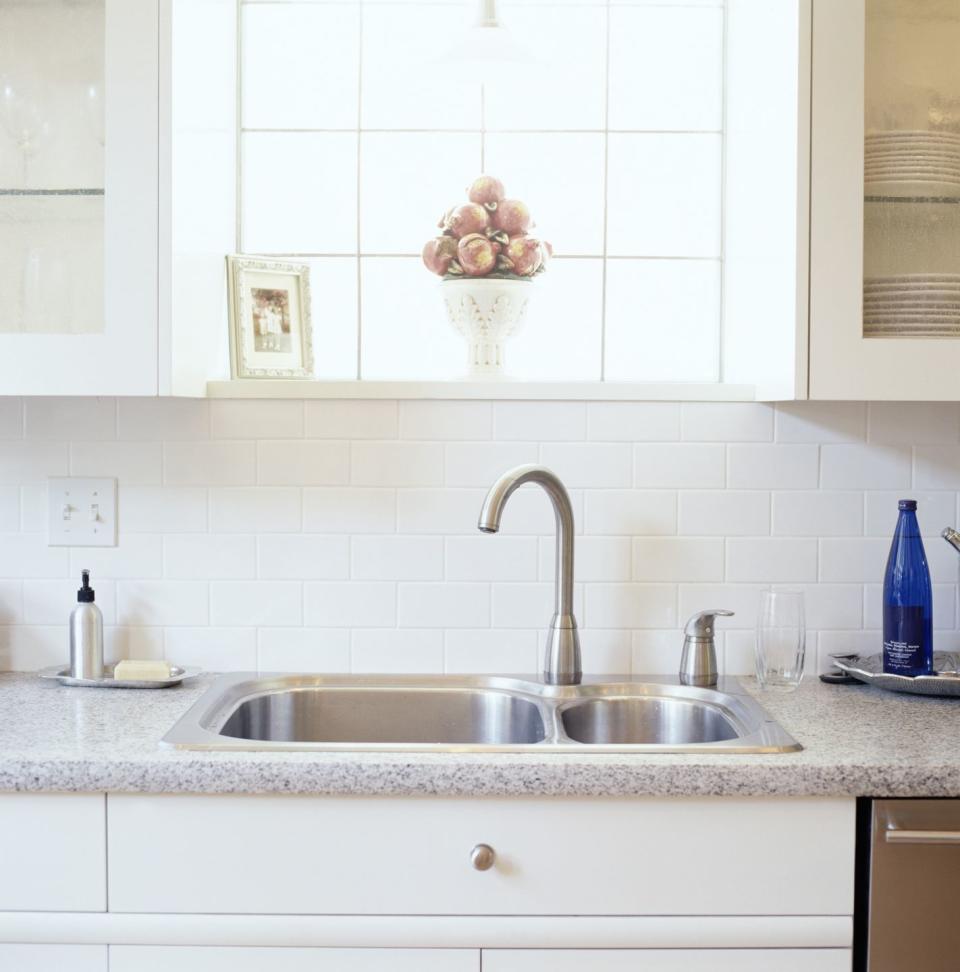
Design So The Sink Is At The End
If you're involved in the design stages of your galley kitchen, situate the sink at the end of the narrow space. "You can go and drop things off there, plus it frees up the counter space opposite of the stove for more prep area," says Shaya. "Prep space is the most coveted space in a galley kitchen where everything's stacked next to each other."
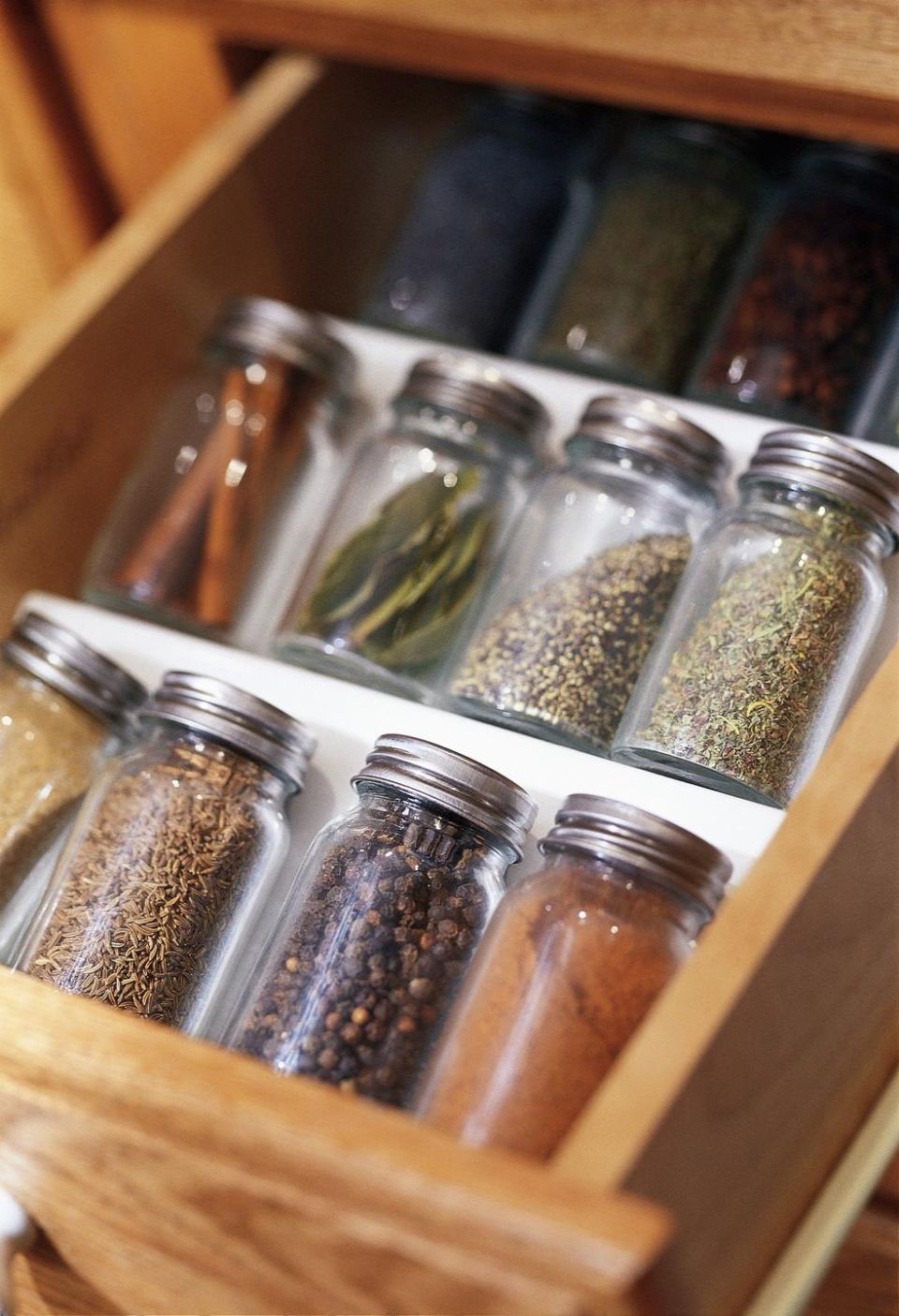
Stop Hoarding Spices
Clean out the old ones right now — they're hogging valuable cupboard space. "We all tend to hoard spices because you buy, say, turmeric for one recipe but then only use a quarter tablespoon," says Shaya. "Then a year and a half later, it's still taking up space and covering up the salt." Toss or donate old spices. After a few months, they lose much of their original quality anyhow.

Keep A Large Bowl For Trash
If you don't have room for a trash bin near your cooking space, use a bowl for scraps and other rubbish. "I always keep a large bowl on my counter as I'm cooking, so I can throw onion skins, paper towels, and anything else in," says Shaya. "Then when I'm finished, I'll take that bowl and just throw out all the contents at once."
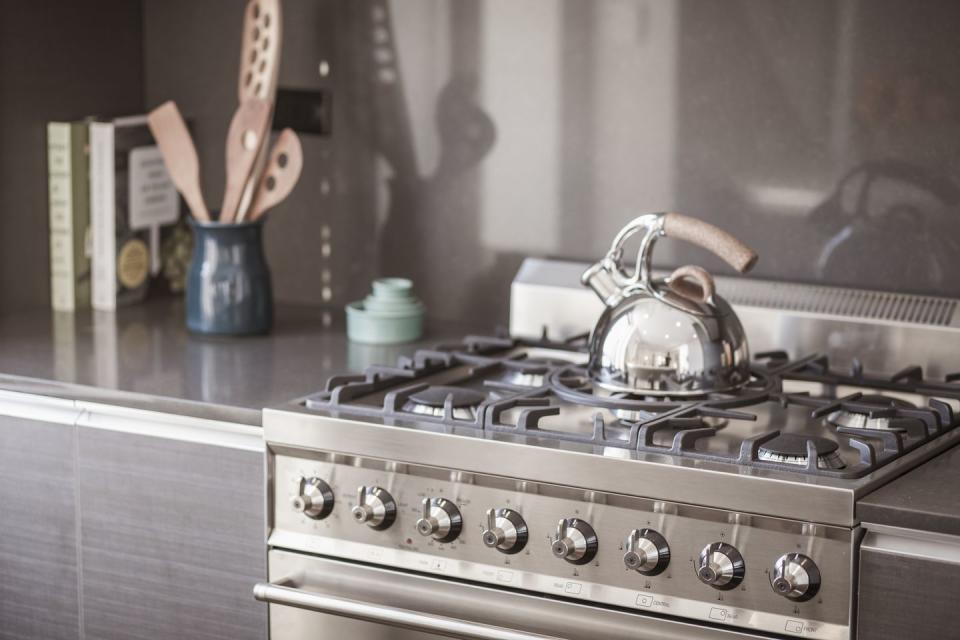
Design So All Appliances Are On The Same Side
One side of the kitchen should be exclusively for cooking. "Your stove should be in the middle on one side, along with other appliances, so the other side is all open cooking space," says Shaya. "It also frees up space of two people to be cooking in the kitchen at the same time, which is sometimes really hard to do in a galley kitchen."
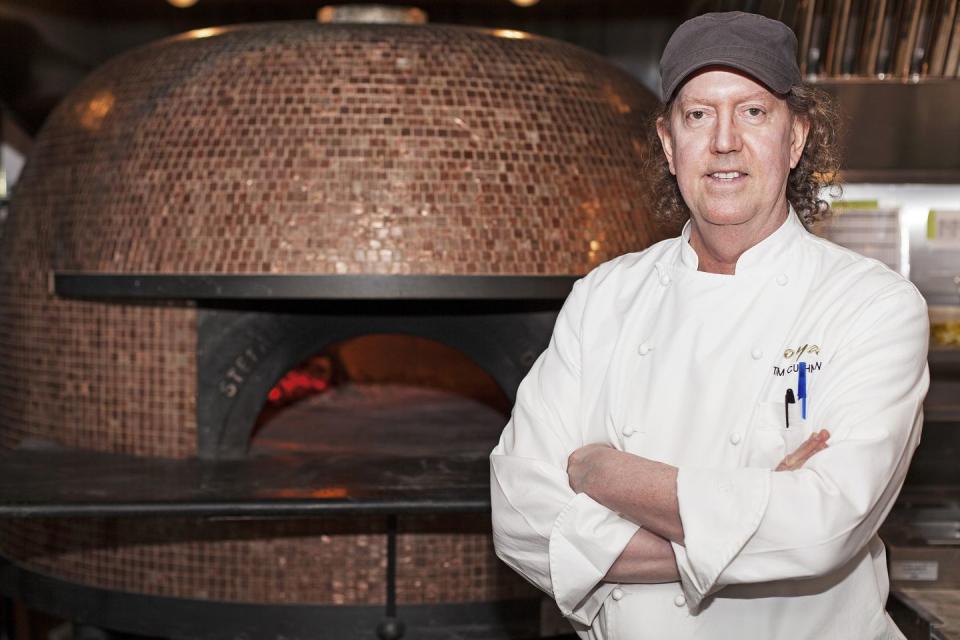
Chef Tim Cushman
"When I was working on an original menu for one of my restaurants, I actually created all the dishes in my home kitchen," says Tim Cushman, chef and owner of Covina in New York City. "It was very important that I maximized the space that I had."
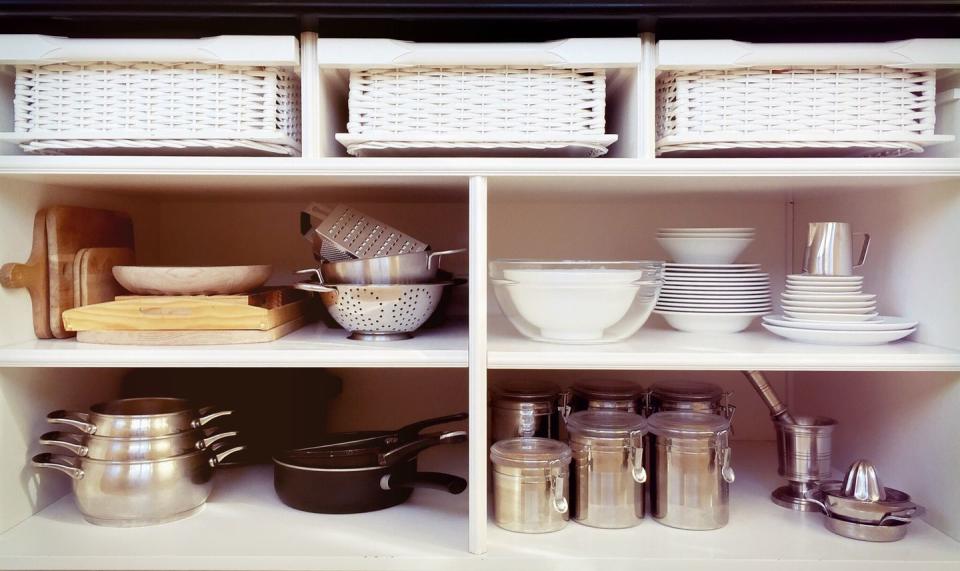
Go Modular
When arranging his own kitchens, Cushman focuses on modular organization with mobile containers. "It's how you take advantage of every little space," he says. "I went to the Container Store and picked up all kinds of little shelves, racks, and other containers that can easily be moved." Baskets, shelves, and trays help you prioritize the items and ingredients you use most, but are still easy to move aside when needed.
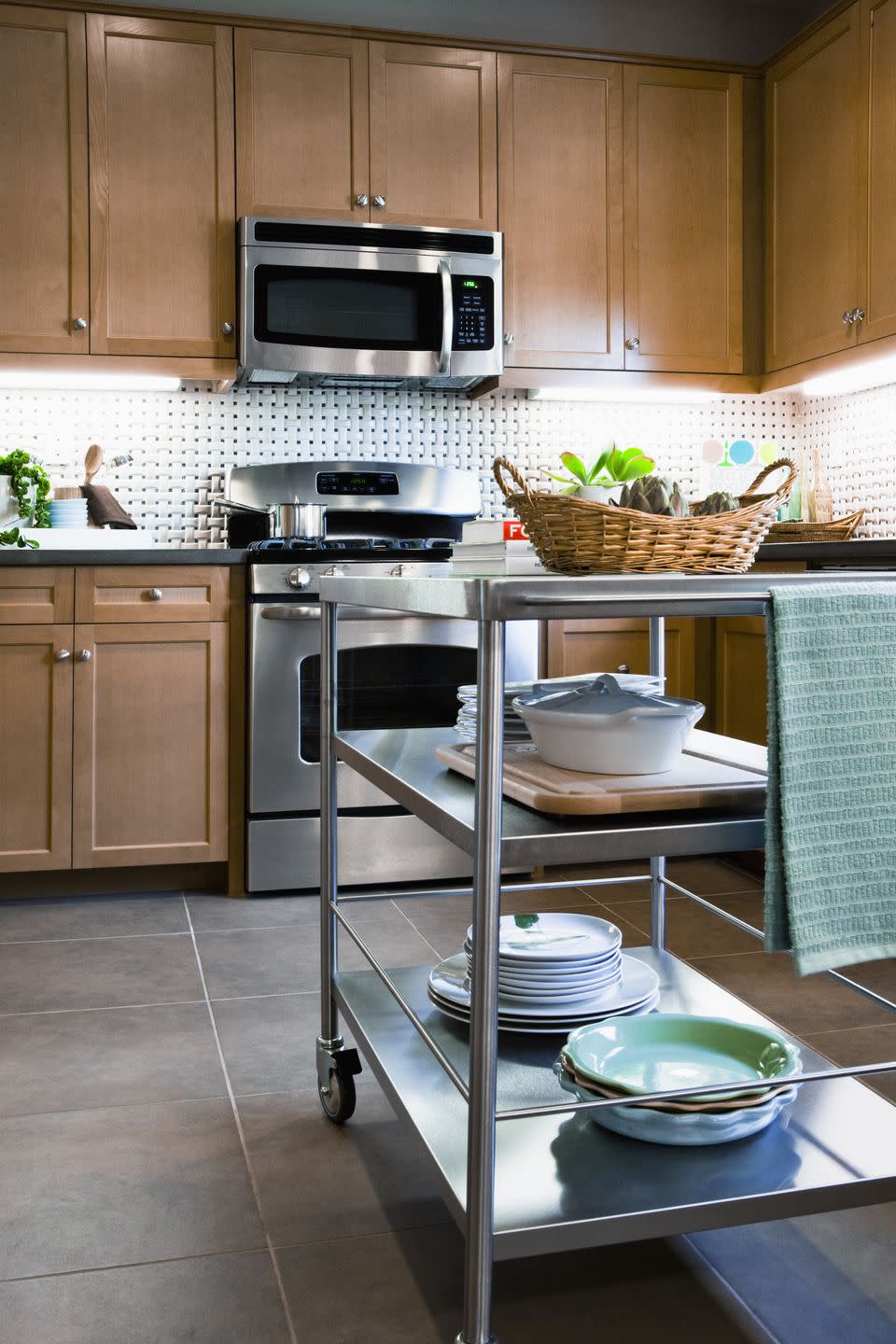
Invest In Rolling Carts
Continuing with the practice of modular organizing, Cushmansuggests a small to medium-sized rolling cart. "If you don't have any way to store certain things, like pots and pans, get a rolling rack so you can just move them out of the kitchen when you're not using them," he says. "That allows you to store them in a closet or somewhere else."
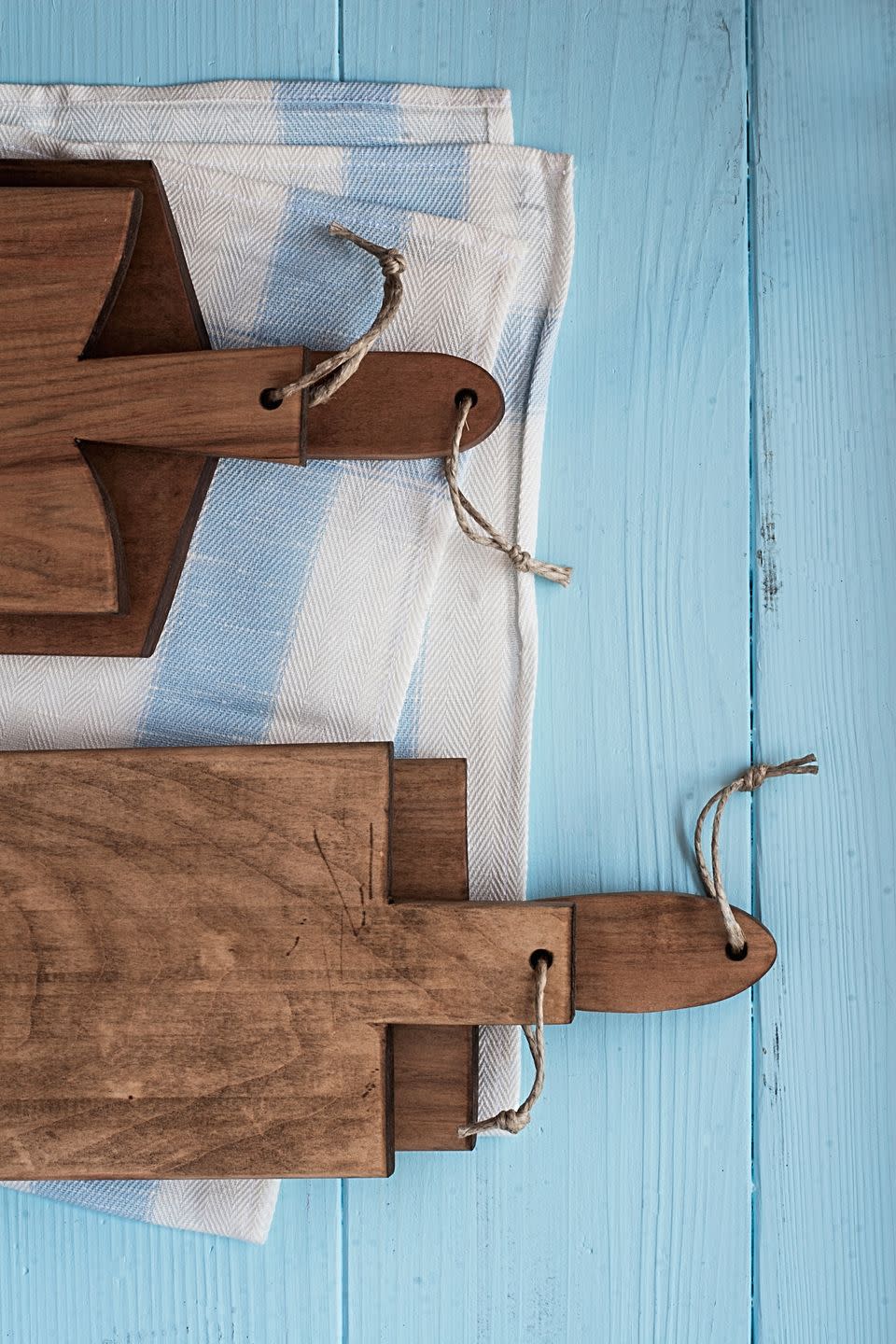
File Away Cutting Boards
The kitchen may seem like an odd place for a filing rack, but it can be a space-saving way to store your cutting board. "I get a filing rack from an office store and use it to hold cutting boards on the counter," says Cushman. "When it sits vertical instead of flat, it opens up space for you to cook."
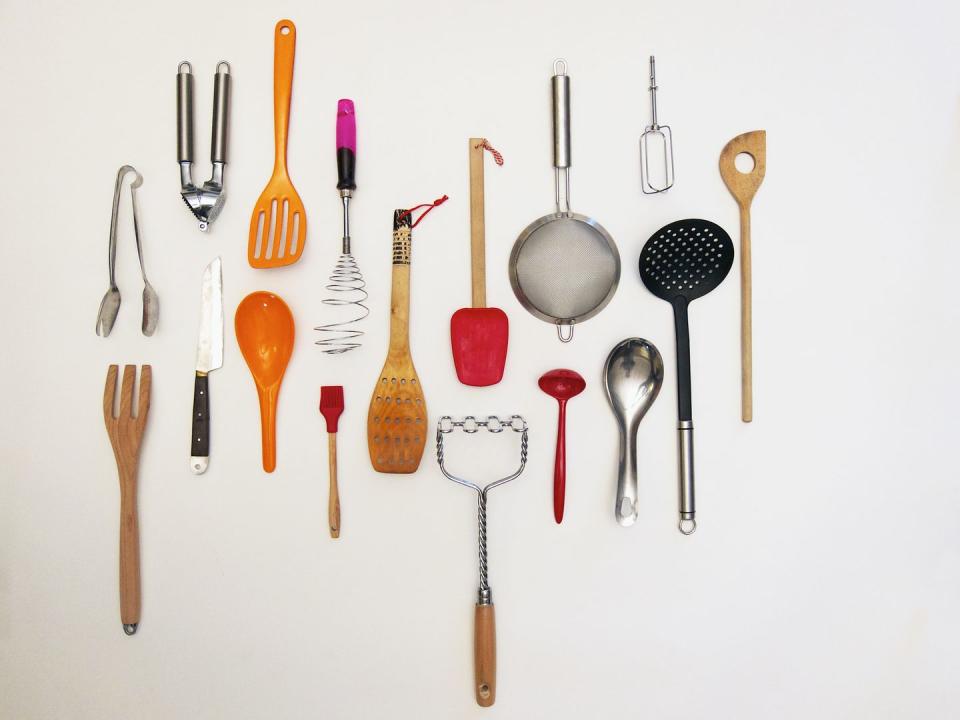
Keep These Tools On The Countertop
Though countertop space is crucial to preserve in a galley kitchen, storing a few select items there can simplify your cooking process. "Try to set up your kitchen so things you might need in an immediate situation are easily available," says Cushman. "You can use a plastic container for things like spoons, tongs, and other commonly-used items. That way, if you need something like tongs to pull out something that's overcooked, you can grab it quickly."
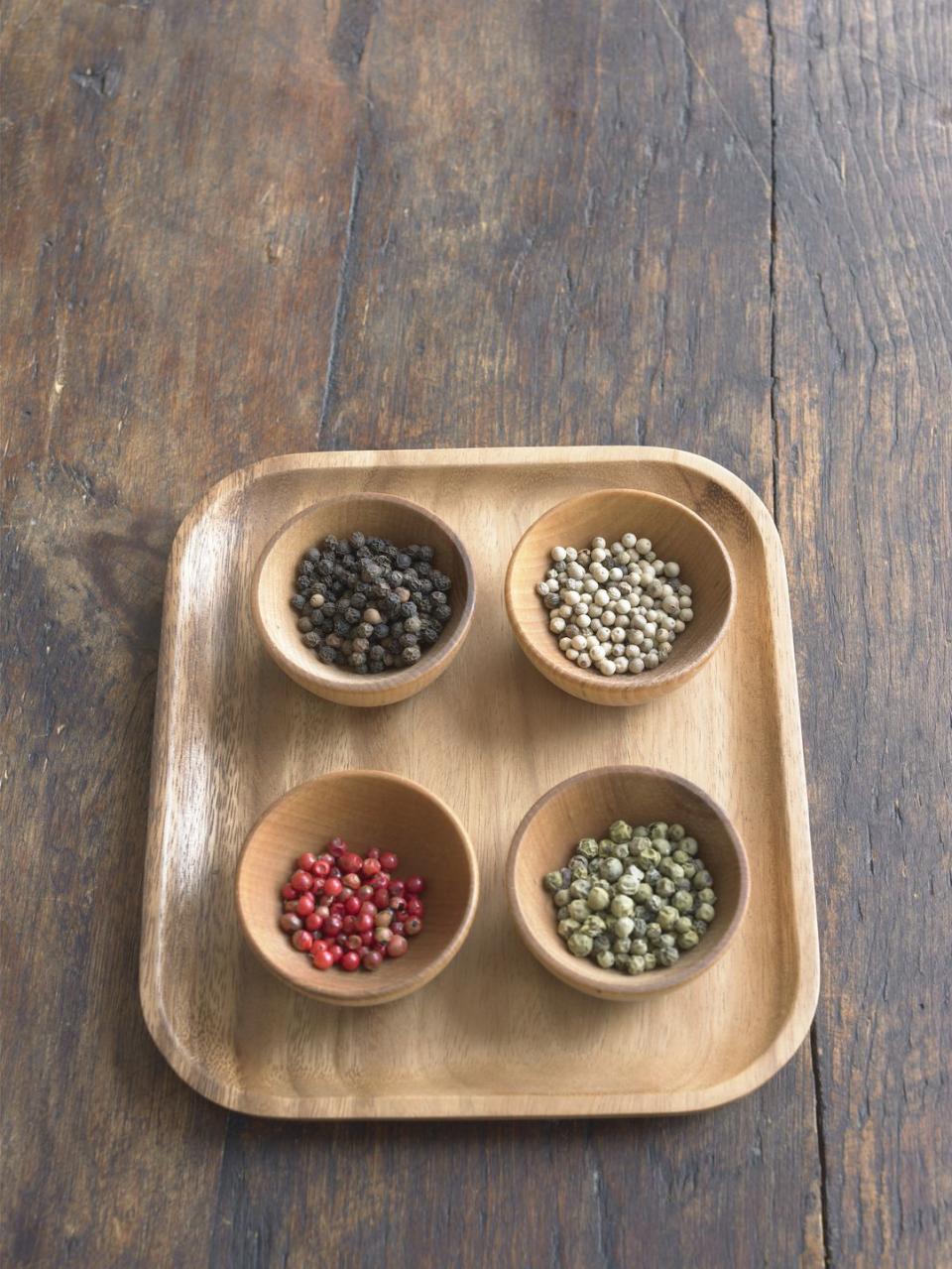
Organize Spices In Mobile Trays
Keep one modular tray available for spices, and arrange which ones you'll need before you start cooking. "You can get nice hard plastic or bamboo trays that are modular," says Cushman. "Use one for spices you'll need for a certain dish, selecting them before you get started. When you're done, you can put them back in the cupboard away from heat and light." It may be tempting to stash all your spices by your stove, but remember that heat and light can damage the color and flavor of spices.
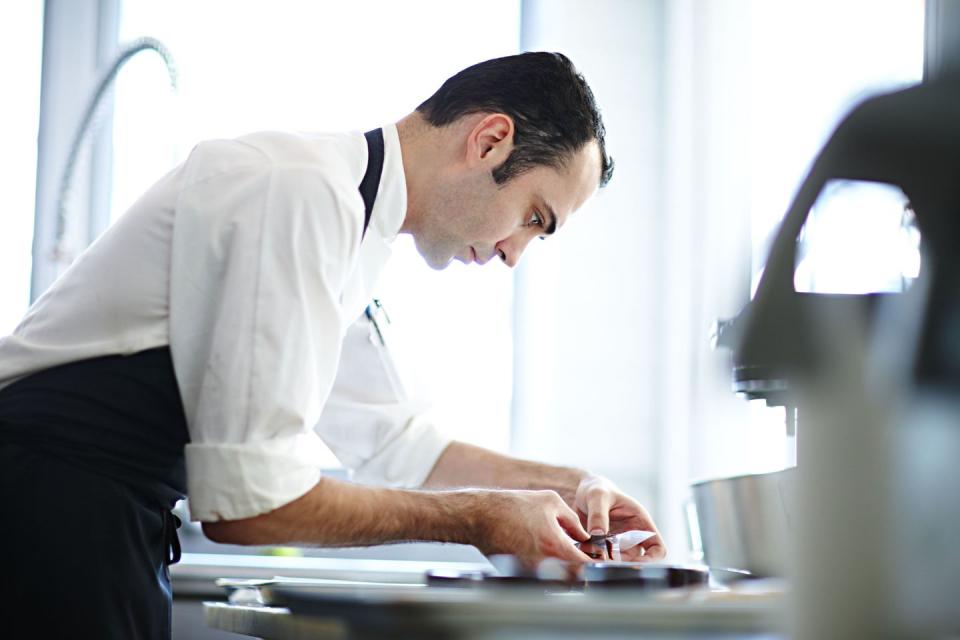
Chef Dominique Ansel
"I started at a restaurant kitchen that was very, very small with just one table," says Dominique Ansel, chef and owner of Dominique Ansel Bakery and Dominique Ansel Kitchen in New York City. "Finding storage space was definitely hard to do."
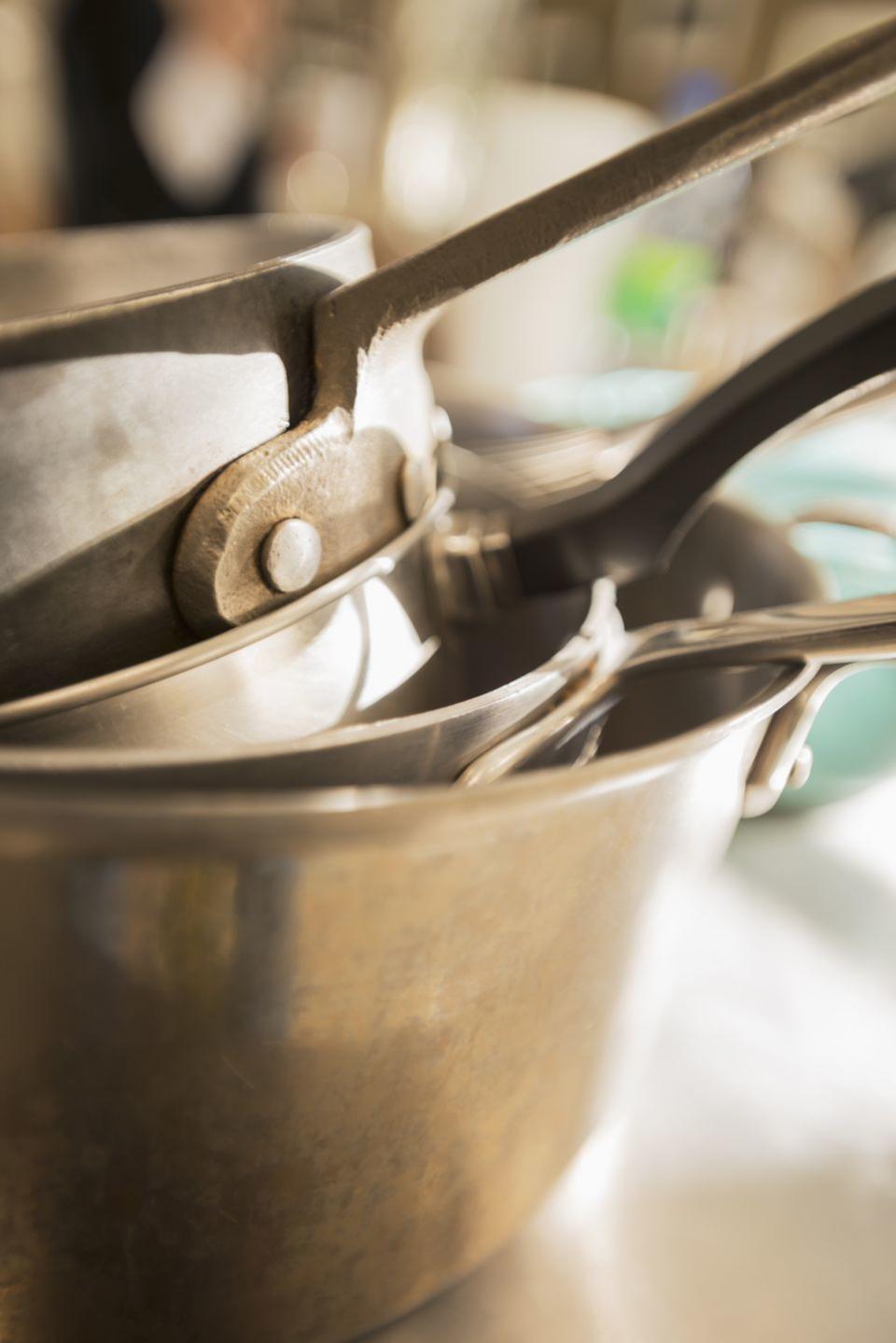
Go Ahead, Stack Your Pots
Yes, even chefs do it: Stack those pots. It saves space. "Ipile up pots the best I can like Russian dolls, putting the small ones in the big ones and as many as I can together," says Ansel. This is not the time to be concerned about how perfectly symmetrical the items in your cupboards look.
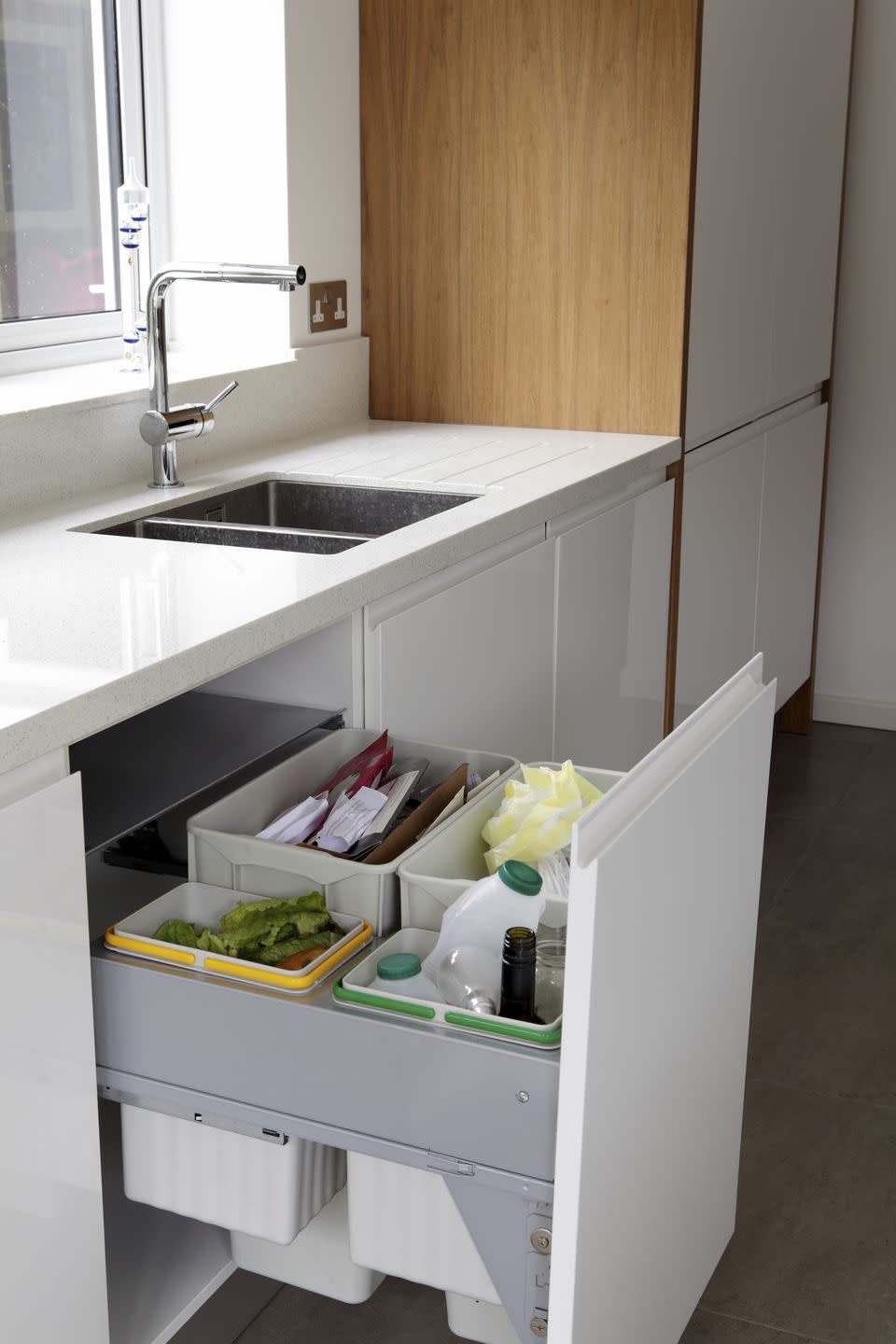
Keep Trash In A Pull-Out Drawer
The best type of trash bin is one that can be tucked away without any trouble. "Under the sink I have drawers that open and I can pull the trash in and out, which is nice and practical," says Ansel.
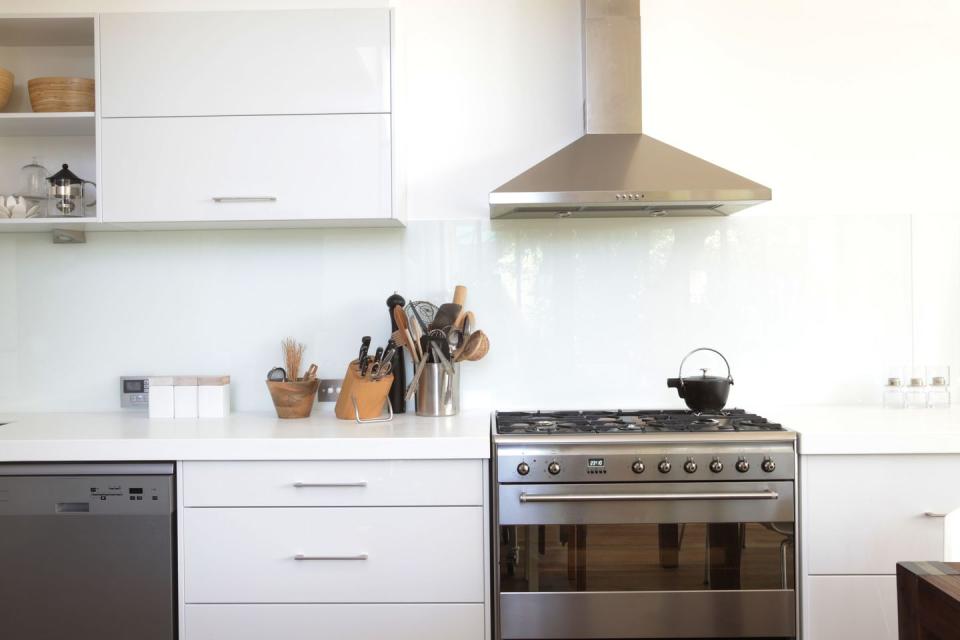
Design So Appliances Are Spread Out
Your appliances should be evenly distributed throughout the length of the galley kitchen. "You don't want the dishwasher or oven to be right next to the fridge in case you need to open both doors, and you want to keep the refrigerator far away from anything that produces heat," says Ansel. Similarly, keep the stove away from windows, which may affect its temperature.

Consider Lighting Before You Start Designing
If you're in the planning stages of your galley kitchen, consider how your cooking space will be lit. Are there windows? Will the lighting already in the space be enough? "In small spaces like galley kitchens, good lighting is very important," says Ansel.

Invest In A Good Hood
Small galley kitchens can get hot, fast. "Having a nice hood is important, especially when you cook a lot," says Ansel. "It sucks up all the heat and humidity and helps keep the temperature of the room lower."
These pros know how to make the most out of a tiny cooking space.